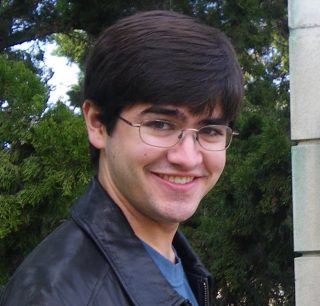Seven days have gone past since we set sail from Astoria, and every day we have looked at these methane seeps. Bubbles, nosy sablefish, half-buried clams, and colorful corals have dominated our ROV feeds from SuBastian.
But in this log, I would like to shed a little light on a different aspect of all of this: the rocks that lie beneath all
of what we have been seeing.
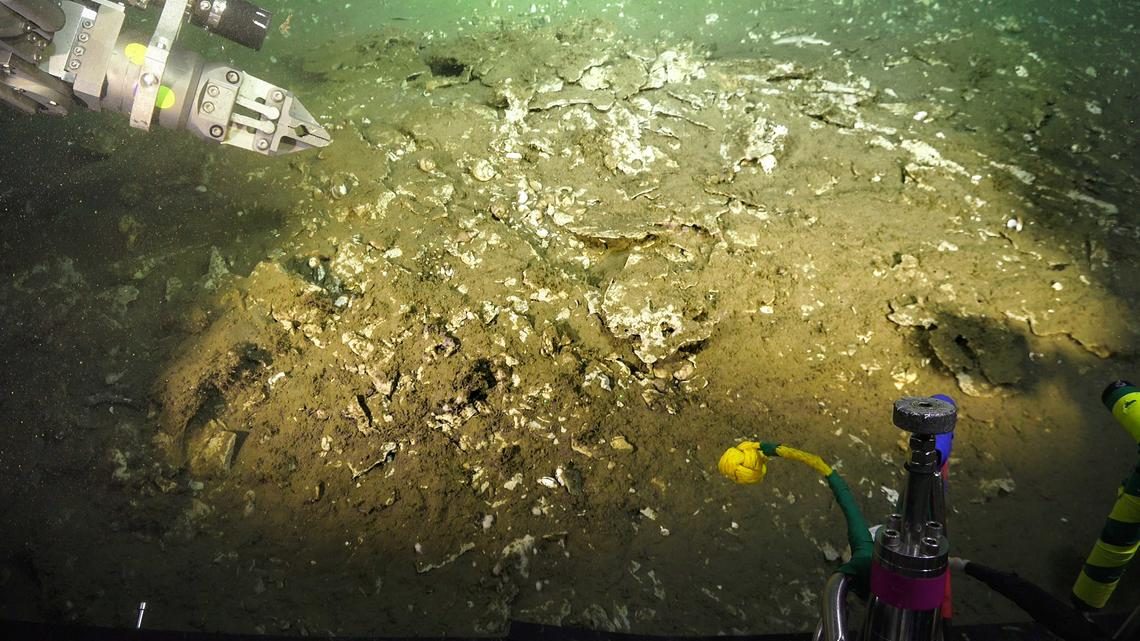
If you have been following along with our ROV dives (which you totally should be), you may have heard GEOMAR scientist Jens Greinert (he of the Bubble Box fame) at one point jokingly tell USGS scientist Amanda Demopoulos (our fearless leader) that “geology determines biology.” As British Geological Survey scientist Diana Sahy and USGS scientist Nancy Prouty explain, he is both right and wrong when it comes to these underwater seeps.
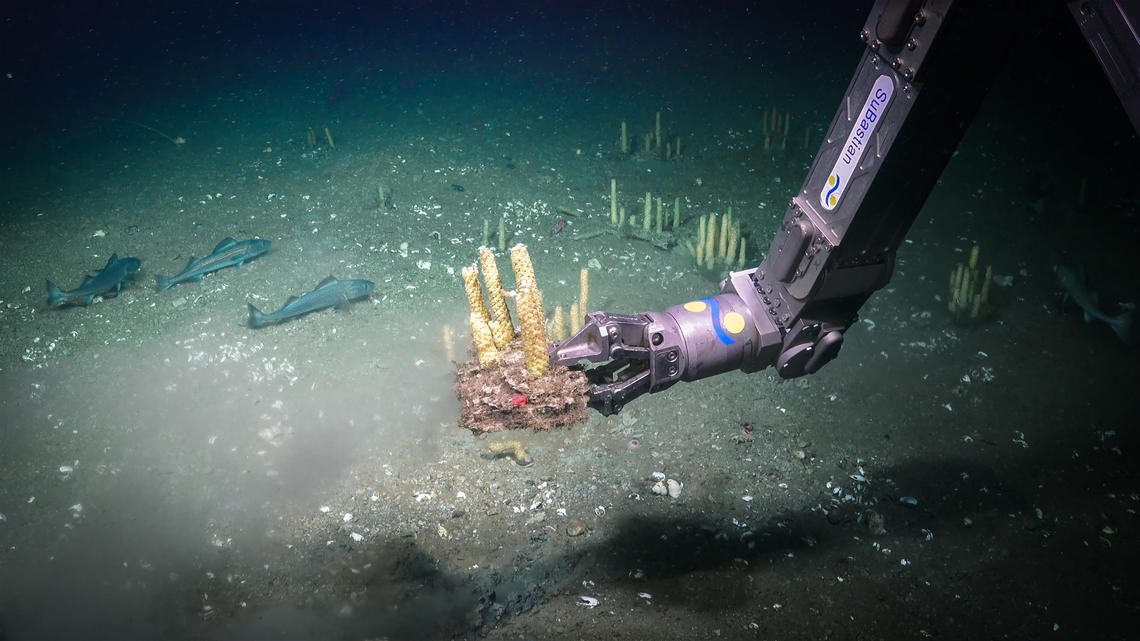
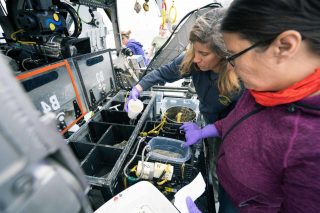
Geology Determines Biology
Let us start with how Jens is right. Nancy Prouty, an oceanographer who specializes in both coral and carbonates in the deep ocean, explains that these carbonate rocks form the platform that much of the life here in these deepwater canyons relies on.
“The deepwater corals that we’ve been seeing in Astoria and Grays Canyons need something solid to hold onto,” said Nancy. “The sediments are often too soft, so they look for rock outcroppings. Here in the seep environment, that rock is usually carbonate.” The corals, in turn, provide essential habitat and shelter for starfish, shrimp, and even larger species of fish.
Biology Determines Geology
But just as the corals require the carbonates to thrive, the carbonates rely on something else to exist: bacteria. Throughout the sediments that make up the seafloor live unique species of bacteria that live by eating the methane that rises from deeper in the sediments.
As these methane-eating, or methanotrophic, bacteria go about consuming the methane in the sediments, they make the environment more alkaline (in case you forgot your high school chemistry, that means the sediments have become more basic, the opposite of acidic). BGS scientist Diana Sahy breaks it down for us:
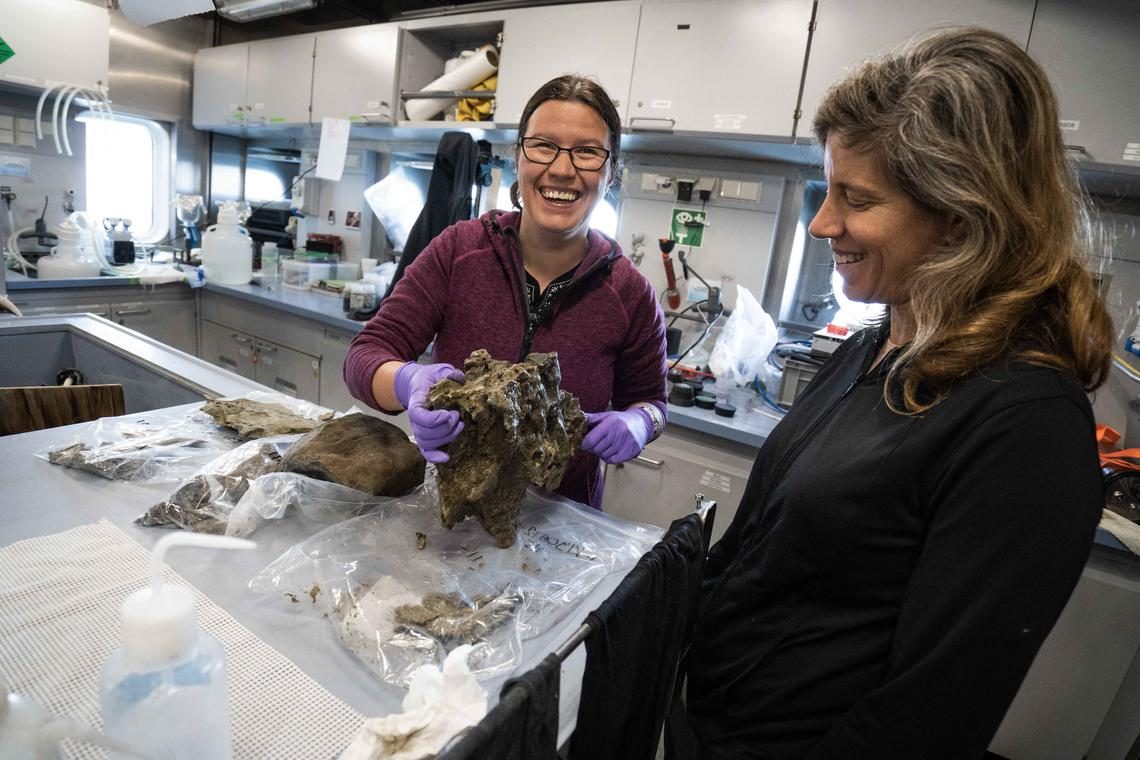
“In an alkaline environment, carbon from methane begins to precipitate, or fall out, of the water, where it can form carbonate rock,” says Diana. “The carbonate starts by gluing all of the nearby sediments together to form a base.”
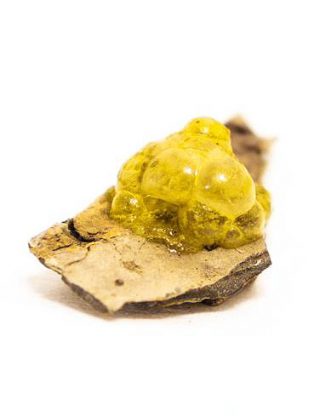
Then, something interesting happens. If you look at a picture of these carbonates, you will see gray areas with white pockets, usually around a hole in the rock. Diana has a theory as to why:
“These carbonates are forming right at or just below the seafloor, where the methane is moving through the sediments. Once the carbonate has pulled all the nearby sediments into its base layer, it’s possible the methane then begins to create pathways through the young carbonate to continue on its way to the ocean,” Diana explains. “The gas flowing through these pathways would keep them clear of new sediment, allowing extremely pure carbonate rock to form.”
Seep Source
One of the neatest things about these rocks, though, is that they tell us the origins of the seeps themselves. The methane that makes it out of the seafloor seeps is actually the small amount that is left over after most of the methane is consumed by the bacteria that are responsible for the formation of the carbonate.
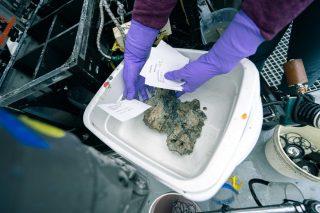
So the question then becomes, why did the seep form? What allowed the methane to get to the surface? The answer to that question is ultimately why Diana is with us on this cruise.
“My job is to date these rocks, to figure out how old they are,” she says. “Once we know how old the rocks are, we can get an idea for how long the seeps have been around, and we can point to possible events that may have triggered their formation.”
One example is the movement of Earth’s outer layers, especially in active places like the U.S. Pacific Northwest margin, where we are now. As faults break through the rock layers, they create pathways for the methane to travel up into the sediments and eventually escape into the ocean.
So now we know how the rocks might form and how the seeps might form. All we need to know now is how the methane itself might form.

Bringing It All Together
As Nancy tells it, the methane in the sediments that creates the carbonate usually comes from bacteria eating organic material in the ocean sediments. So where does that organic material come from?
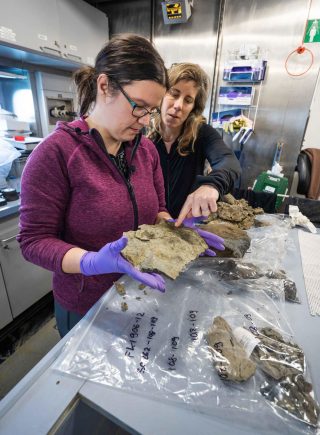
“Rivers, mostly,” said Nancy. “Rivers erode the land they pass through, carrying all kinds of material to the ocean. That includes organic matter that settles into these sediments. The organic material then serves as food for the bacteria.”
To sum up, then, rivers bring food to the ocean floor, which then feeds methane-producing bacteria, who in turn feed methane-consuming bacteria, leading to the formation of carbonate. The carbonate then serves as a foothold for corals to settle and grow, and sustains other creatures that feed on the bacteria that eat the methane, like clams, and the products of methane’s destruction. So in this case, geology not only determines biology, but microbiology also governs many aspects of the geology.
